Monument Valley is located outside the popular tourist routes in the Utah-Arizona region, which is why it was not a popular location for a long time. Neighboring locations such as the Grand Canyon, Zion National Park, and Bryce Canyon National Park had greater exposure and were widely popular among visitors from around the world.
It was and still is a popular vacation itinerary for tourists to fly into Las Vegas and spend anywhere between six and eight days completing a giant loop through Nevada, Arizona, and Utah visiting the three major National Parks and the half-dozen State Parks and National Monuments.

Hollywood made Monument Valley popular. When John Ford started featuring the Valley in his blockbuster westerns, the distinctive views of Monument Valley soon became iconic symbols of the American West that were recognizable across the globe.
Monument Valley’s most recent wave of popularity came in the 1990s thanks to the Oscar Award-winning film, Forrest Gump. The obscure spot outside the park where Forrest Gump ends his running streak quickly became one of the most photographed spots in the region thanks to the film. It is unofficially named “Forest Gump Point.”
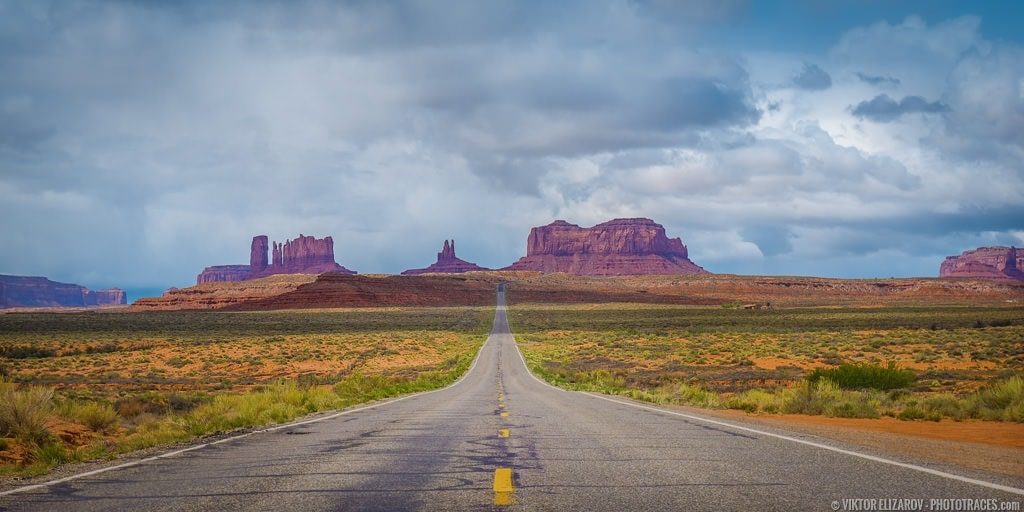
Monument Valley is located in the middle of nowhere, far from all the major airports. This means it is better to make the trek to the region as part of a multiday trip.
When I visited the park for the first time, I flew into Phoenix. I spent the first day in Sedona and dedicated the next two days to the Grand Canyon. From there, I took a less popular route toward eastern Arizona and Utah. Over the next three days, I visited three of the destinations that eluded me for a long time—the Canyon de Chelly, Valley of the Gods, and Gooseneck State Park. On the last day of my eastern Utah detour, I drove to Monument Valley from the east and started my exploration at Forrest Gump Point.
Monument Valley Scenic Drive
Monument Valley is located on the Navajo Nation Reservation and is not part of the National Park system. Because of this, it has many tribal restrictions. After enjoying the freedom you find from exploring National Parks, the tribal restrictions can be annoying but you have no choice but to play by the rules.
The main restriction is that the only place you can explore on your own is the dirt road loop known as Valley Drive. For the rest of the park, you must be part of a guided tour. The guided tours are not cheap, and they require advance scheduling and organization.

If you are only visiting Monument Valley for a day, Valley Drive is your only choice. But you do not have to worry because the drive has plenty to offer. It is a 17-mile dirt road that passes by the most popular sites in the valley. It does not require 4×4 or high clearance cars; any rental sedan will suffice. But like most dirt roads in Utah and Arizona, when the roads are wet, they are impassable regardless of what car you drive.

There are no special tips for driving the loop. With the speed limit set to 15m/h, you drive very slowly and, when you see something interesting, you stop, take a few pictures, and enjoy the greatness. Once again, because of the tribal restrictions, you are not allowed to hike far away from the road.
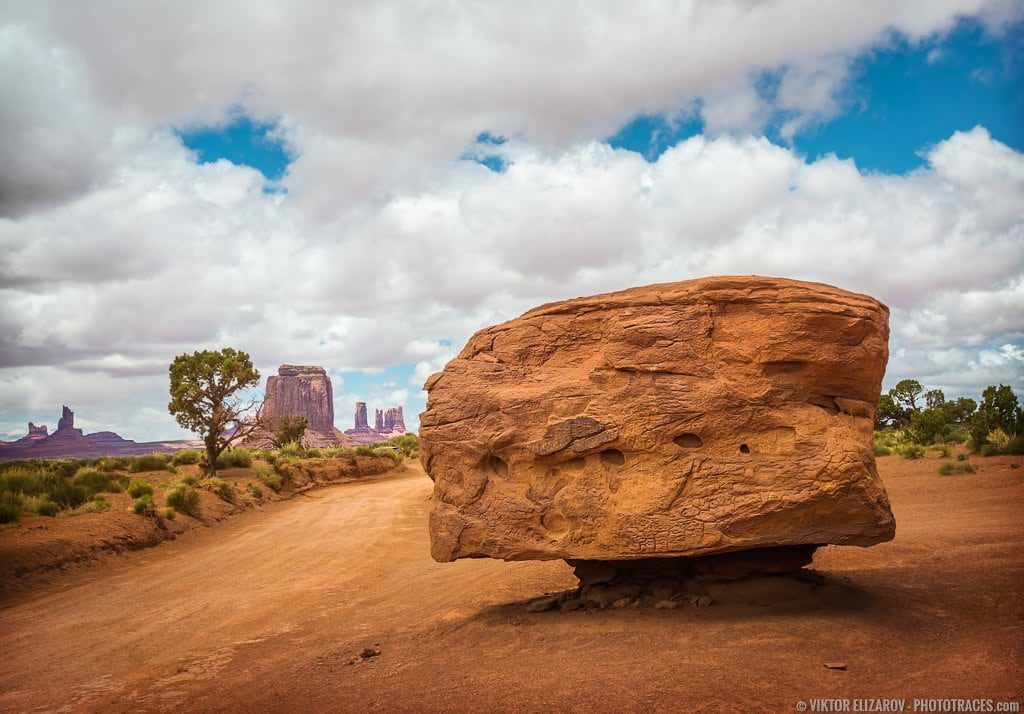
Another challenge in Monument Valley is the crowds. If you visit the valley during high season, it can be annoying. The 17-mile drive covers a vast area, so the number of individual cars on the drive is not as noticeable. The tourist buses are what make the road busy since buses are not allowed to enter the drive. Instead, tourists are seated in small, open vehicles prior to entering the scenic drive. When you see five to six buses in the Visitor Center parking lot, you know Valley Drive will be packed.
On my first visit, I was lucky because the weather was awful. The cold rain and gusty winds started up at least 20 times throughout the day. Every time the rain clouds covered the sky, the temperature dropped at least 10 to 12 degrees. I loved it. The rain scared away most of the tourists, which gave me the chance to take a few dramatic photographs.
My advice is to start the drive as early as possible to beat the crowded tour buses. This will give you a couple of hours to enjoy the beauty of the valley in relative solitude.
Valley Drive Scenic Points
Do not forget to grab the Valley Drive map at the Information Center. This will help ensure that you do not miss any of the main attractions.
On the map, you will find 11 main scenic points over the 17-mile drive. Do not limit yourself to only the marked spots because you will have dozens of opportunities to take in the scenery between the stops.
Lookout Point
It is rare that the view from the Visitor Center is one of the most impressive and astonishing but that is the case at Monument Valley. The Visitor Center is located at the top of the hill and gives a wide, unobstructed view of the northern part of Monument Valley.

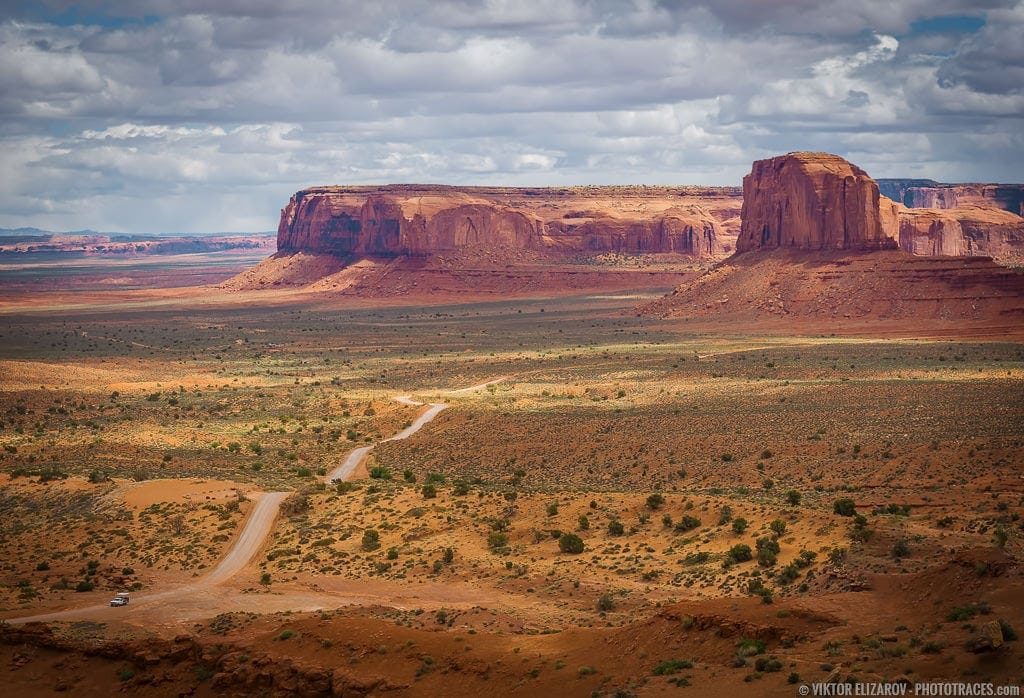
The Mittens and Merrick Butte
When you enter Valley Drive, you immediately start the descent into the valley. From the first observation point, you have a more intimate view of the West Mitten and East Mitten Buttes and the Merrick Butte.
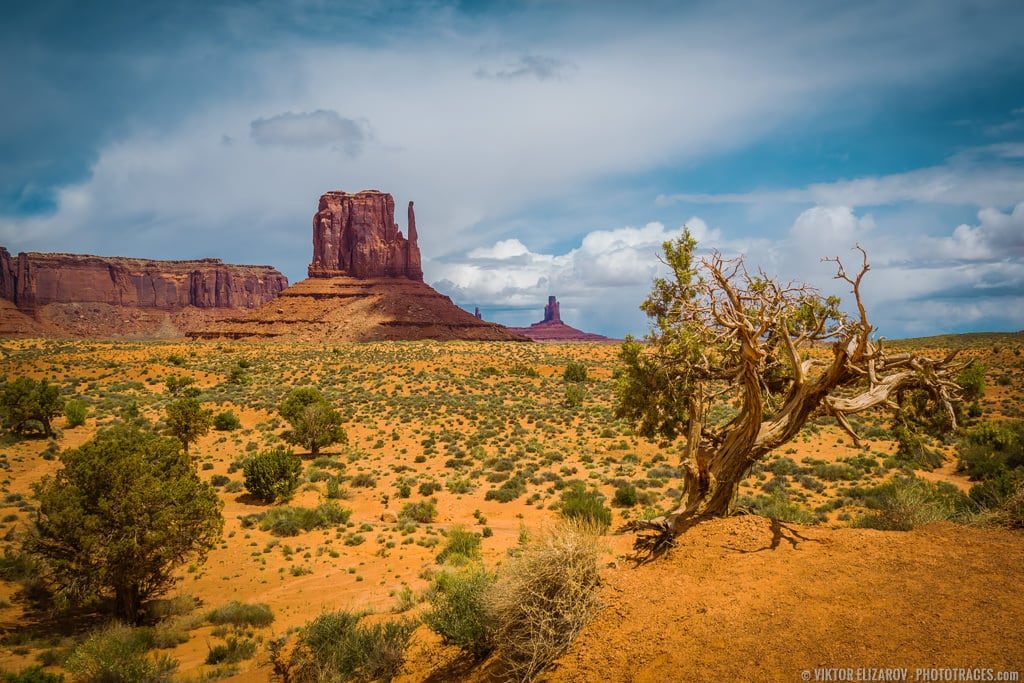

Three Sisters
Three Sisters is a rock formation composed of three vertical rocks. It is prominently visible from almost every part of the drive. I think the Three Sisters look the least impressive from the dedicated observation point.
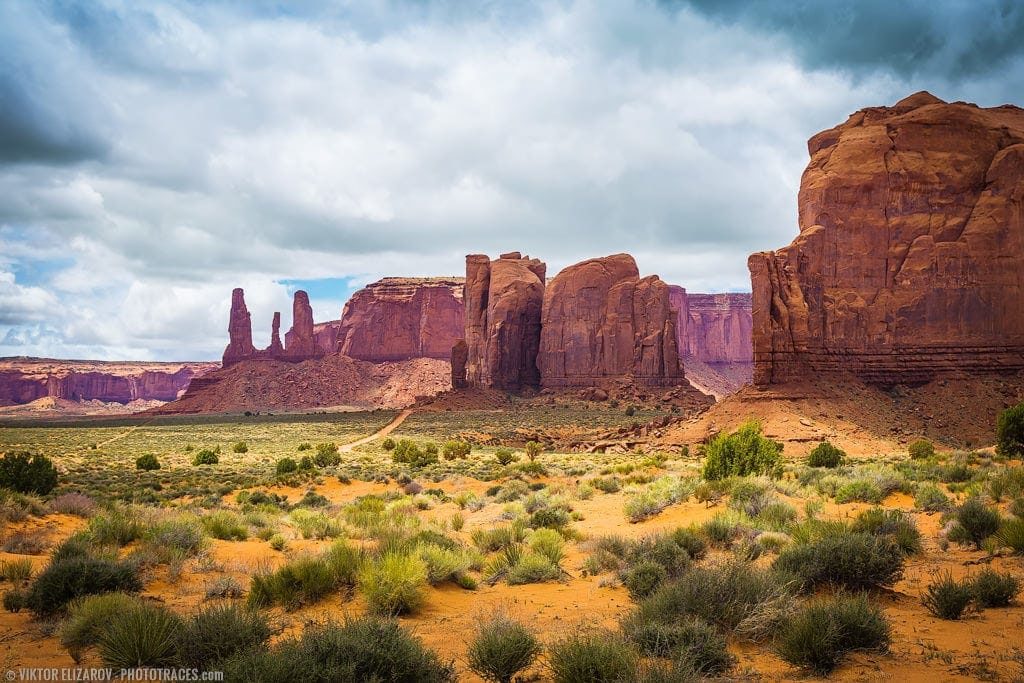
John Ford’s Point
By far, this is one of the most popular and most spectacular locations in the entire park. If you are there in the middle of the day during high tourist season, expect at least 10 tourists taking selfies at the iconic natural observation platform. This makes it extremely difficult to get an interesting shot.
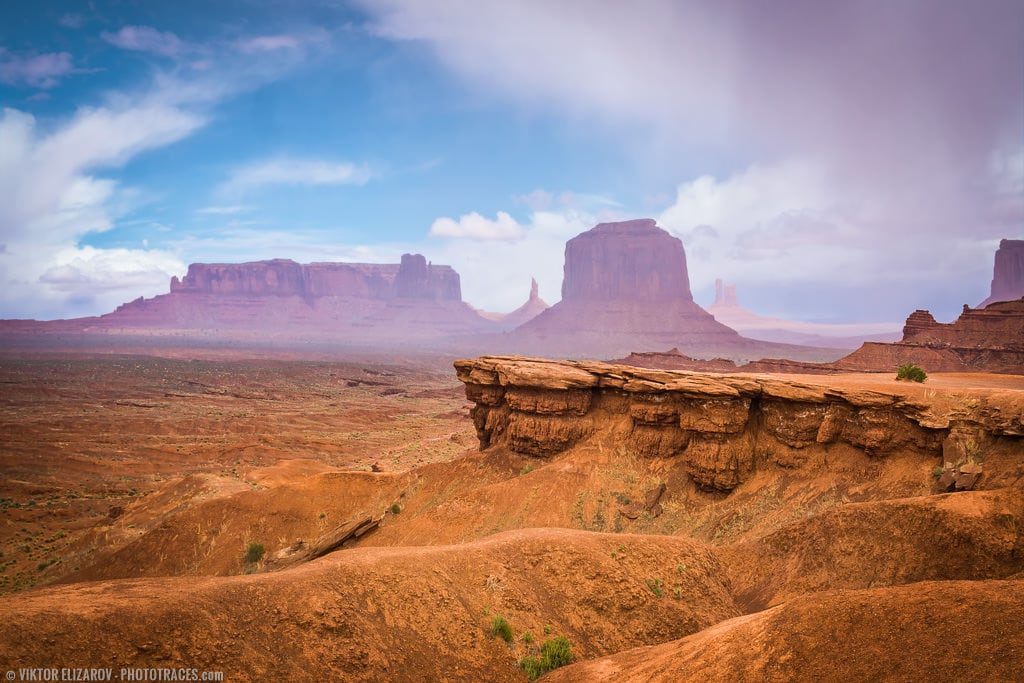
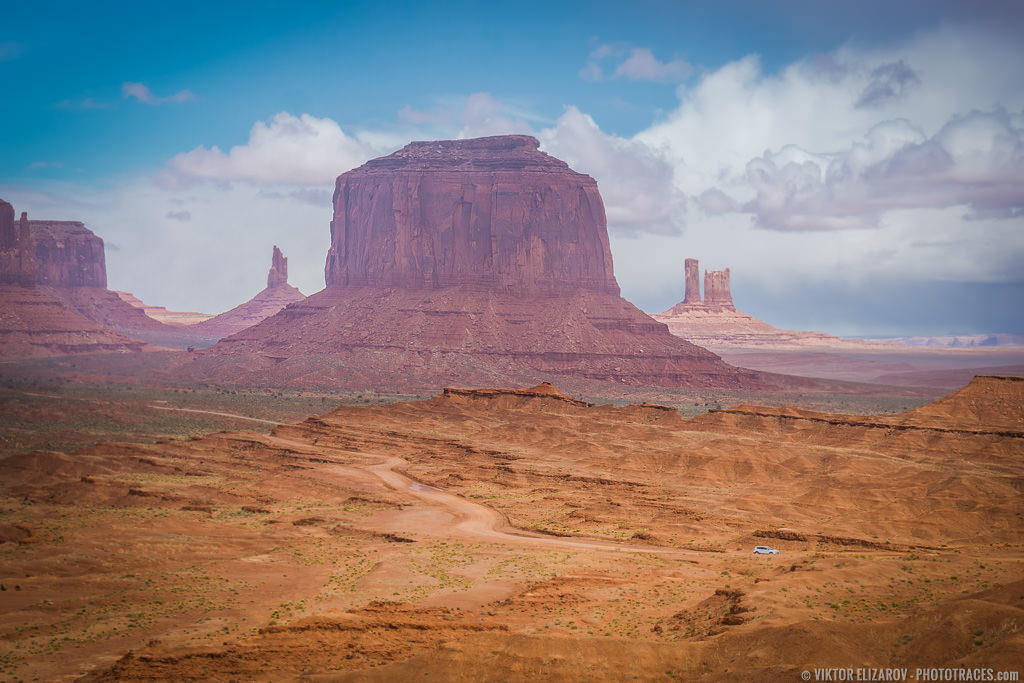
Camel Butte
The Camel Butte rock formation is not very impressive itself, but the observation point offers some amazing views in different directions.
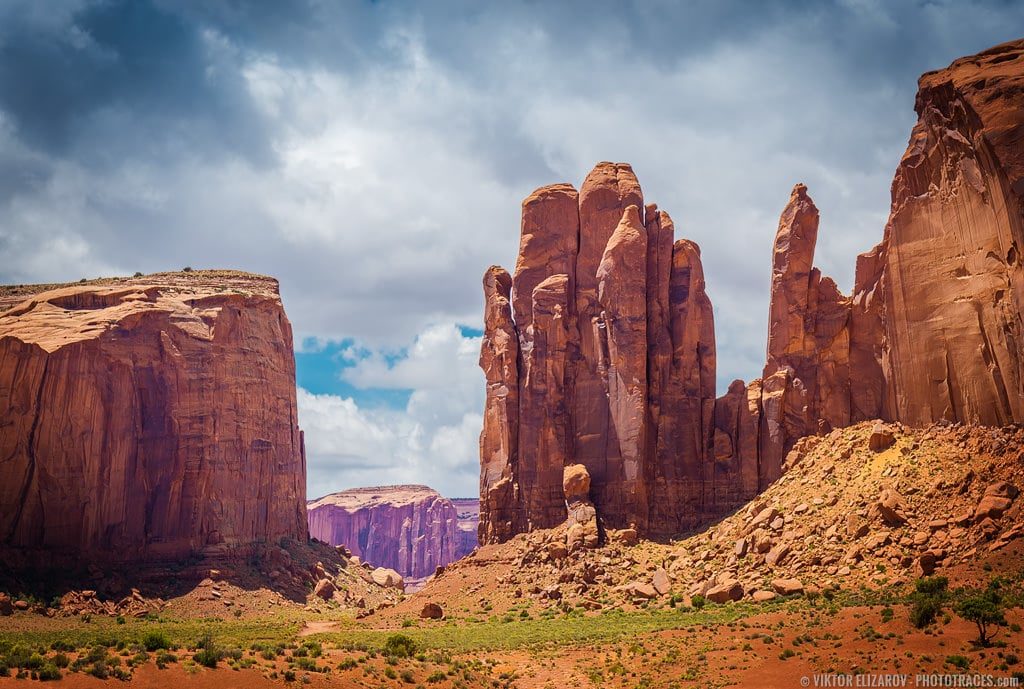
The Hub
The view from The Hub toward John Ford’s Point is to die for. I prefer the perspective from the opposite direction where you can see three to four layers of points of interests spread from the foreground to the distant horizon.
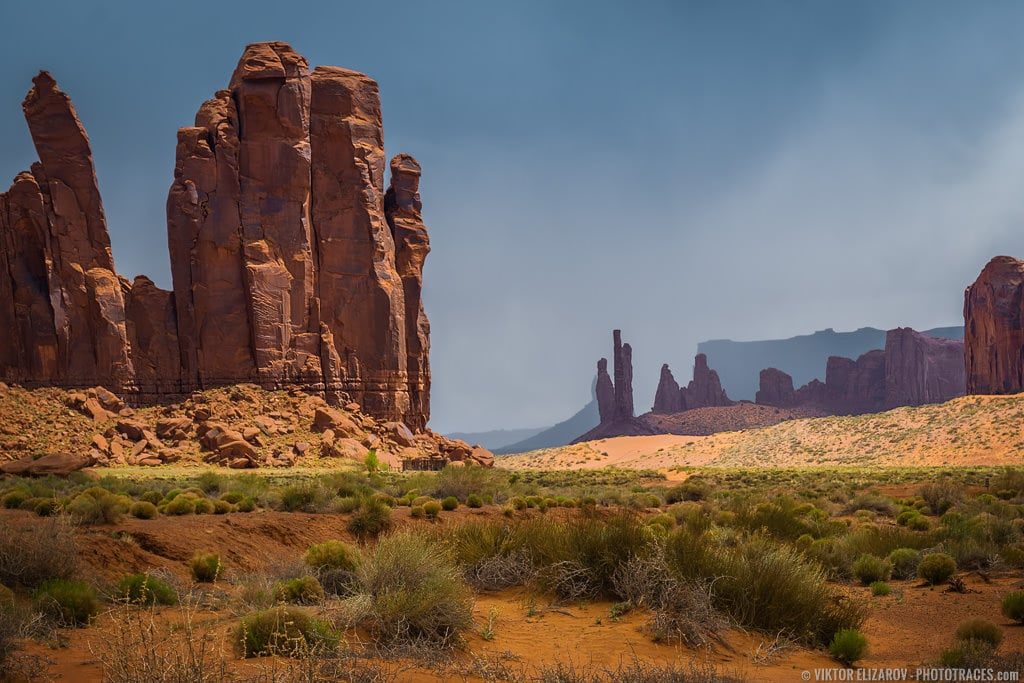
Totem Pole and Yeti Bi Chei
The Totem Pole is probably the most distinctive formation in the entire park because it does not look like anything else around. It is a series of giant, elegant spears erected in the valley.

Artistic Point
Artistic Point offers the widest and most panoramic view on the eastern side of the park. The flat, endless plain only emphasizes the magnitude of the various buttes and mesas that are spread around in artistic randomness.
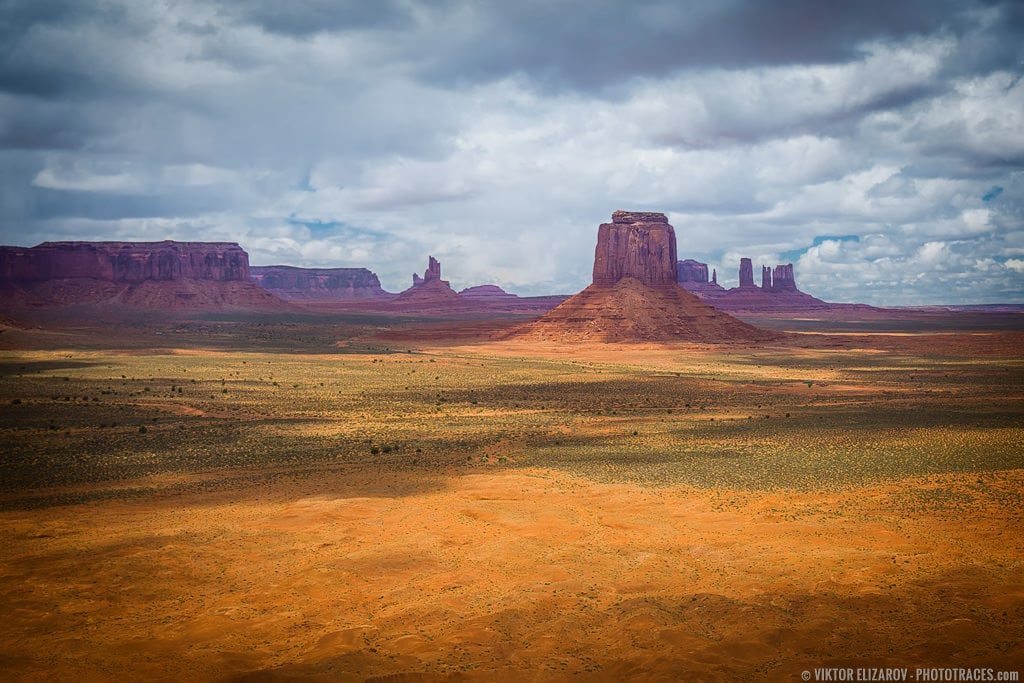
North Window
The North Window Point offers a view similar to the Artistic Point, but it gives you the option to observe the Spearhead Mesa where Artistic Point is located.
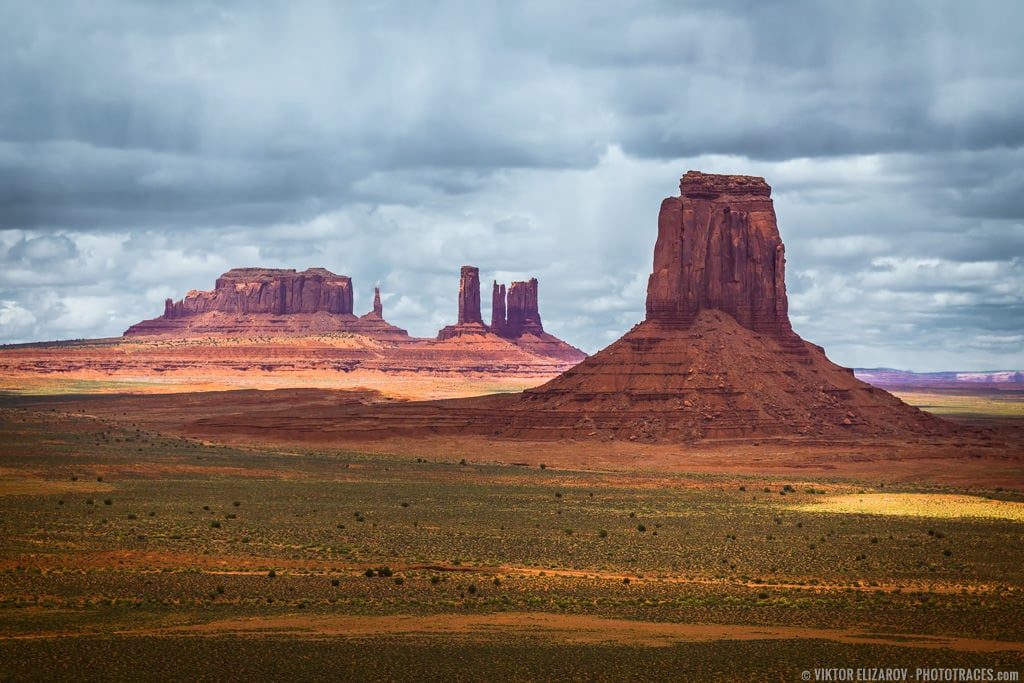
The Thumb
The Thumb rock is probably the most miniature attraction of the drive by Monument Valley standards.
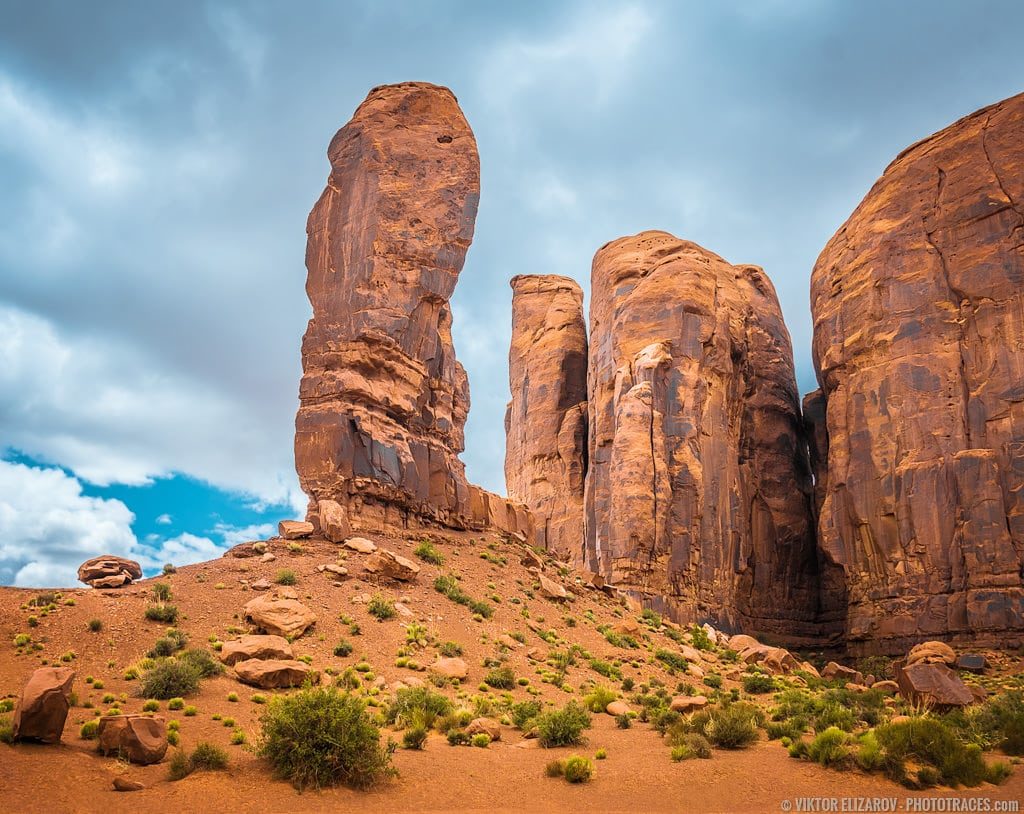
At this point, you complete the loop and are ready to drive back toward the Visitor Center.
Stop by the gift shop to look at the interesting souvenirs. Do not forget to take a few more shots from Lookout Point before you leave the park.
Credit to Viktor Elizarov, from www.phototraces.com
Please contact us for removal if there is any copyright infringement.

